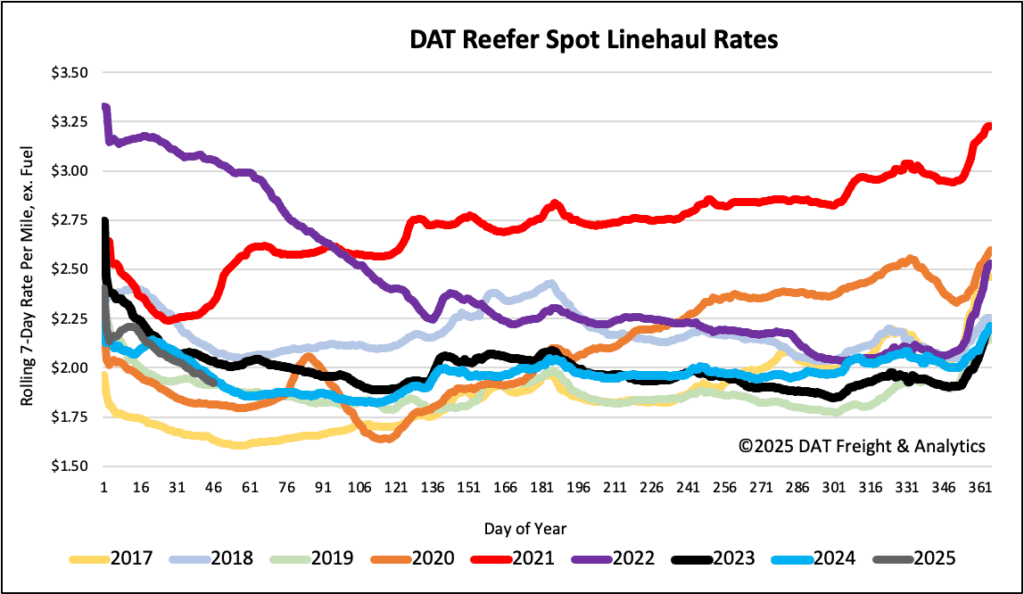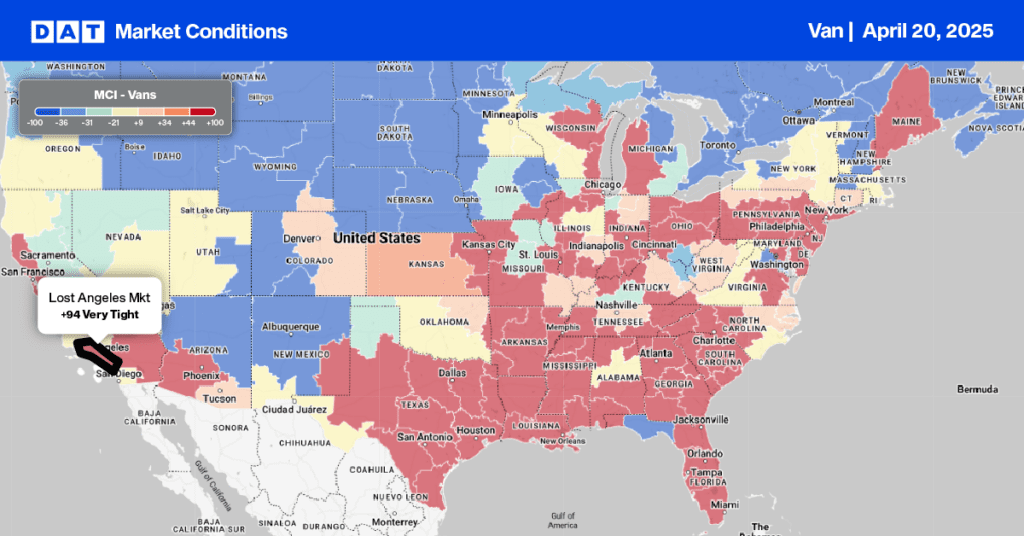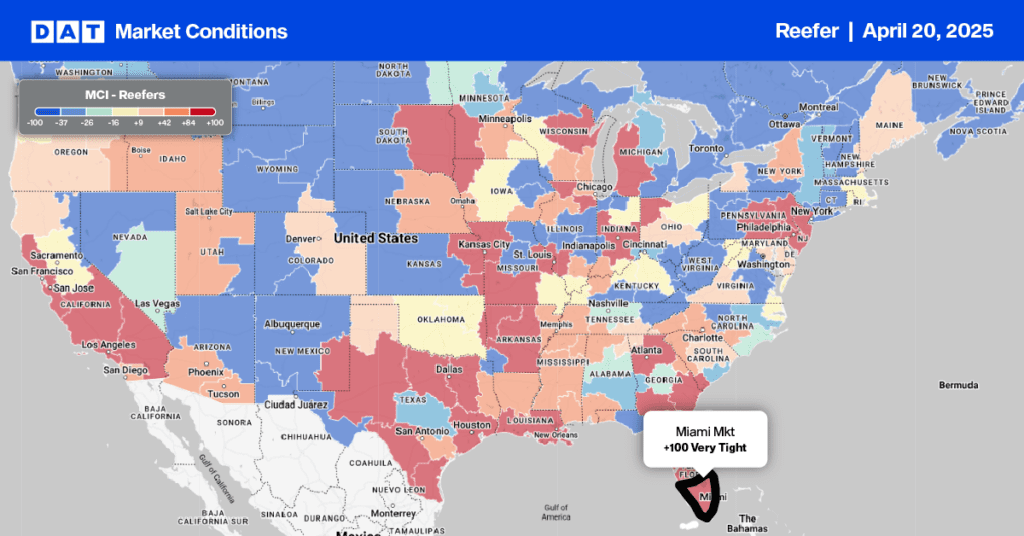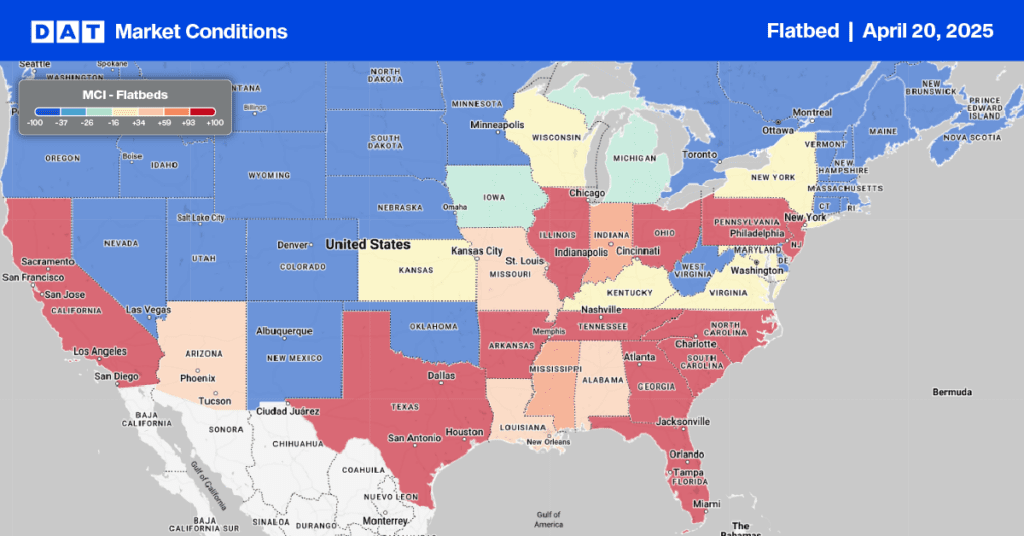Each spring, the Florida Strawberry Festival rolls out the red carpet to welcome visitors from throughout the Sunshine State and the world. This year, the event runs from February 27 to March 9 in Plant City, often known as the “Winter Strawberry Capital of the World.” Florida produces approximately 15% of the U.S. ‘s strawberries, making it the second-largest strawberry-producing state after California. It generates hundreds of millions of dollars annually and provides significant employment opportunities, especially during the harvest season.
Get the clearest, most accurate view of the truckload marketplace with data from DAT iQ.
Tune into DAT iQ Live, live on YouTube or LinkedIn, 10am ET every Tuesday.
Florida strawberries are a winter crop, with peak production occurring from November through March, making them a vital source of fresh strawberries during a time when other U.S. regions cannot grow them. Annually, Florida produces about 215.73 million pounds of strawberries, or the equivalent of just over 5,000 refrigerated truckloads in the eight weeks from the start of February to the end of March. That’s around 650 loads of strawberries shipped each week, marking the start of the Florida produce season, which typically sees available reefer capacity tighten considerably from early April to the latter part of May when the season peaks.
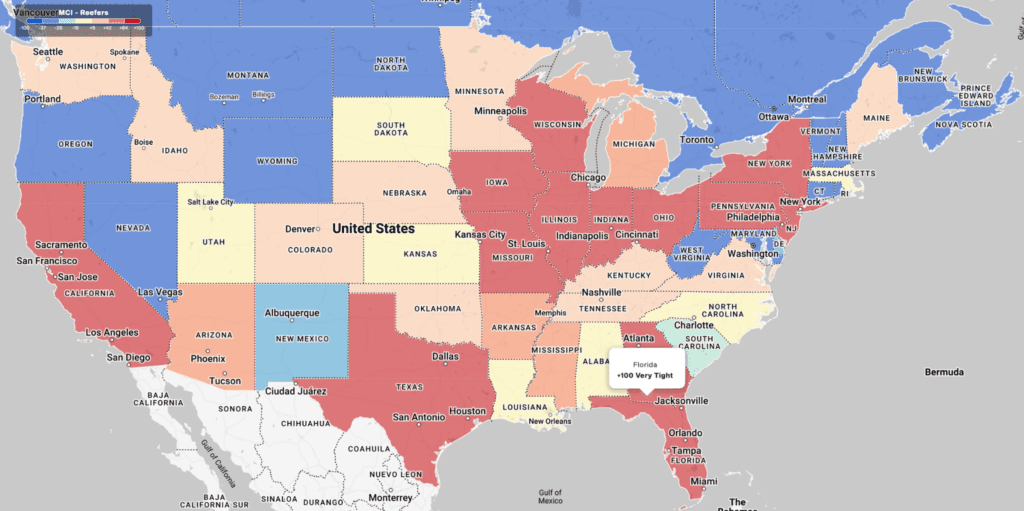
Load-to-Truck Ratio
Reefer load post volumes are 6% higher than last year, following last week’s 12% decrease. Last week’s reefer load-to-truck ratio (LTR) ended at 8.13.
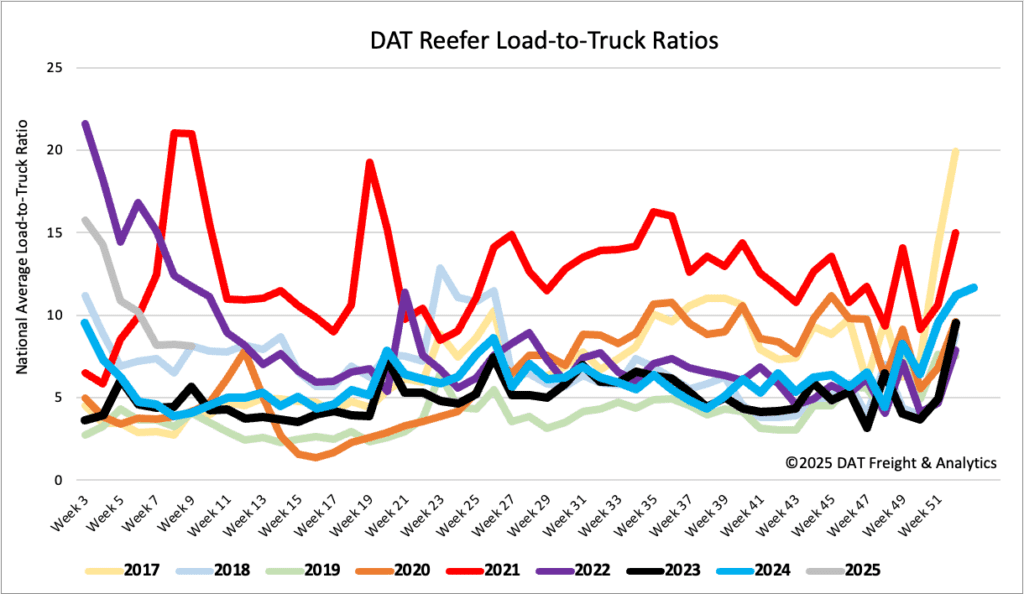
Spot rates
The national average of $1.94/mile is now $0.02/mile lower than last year, following last week’s $0.05/mile decrease. Looking back to 2016 and excluding the pandemic-influenced freight markets, last week’s 7-day rolling average reefer rate was $0.08/mile higher than the long-term Week 7 average of $1.87/mile.
